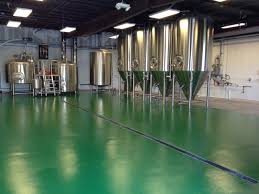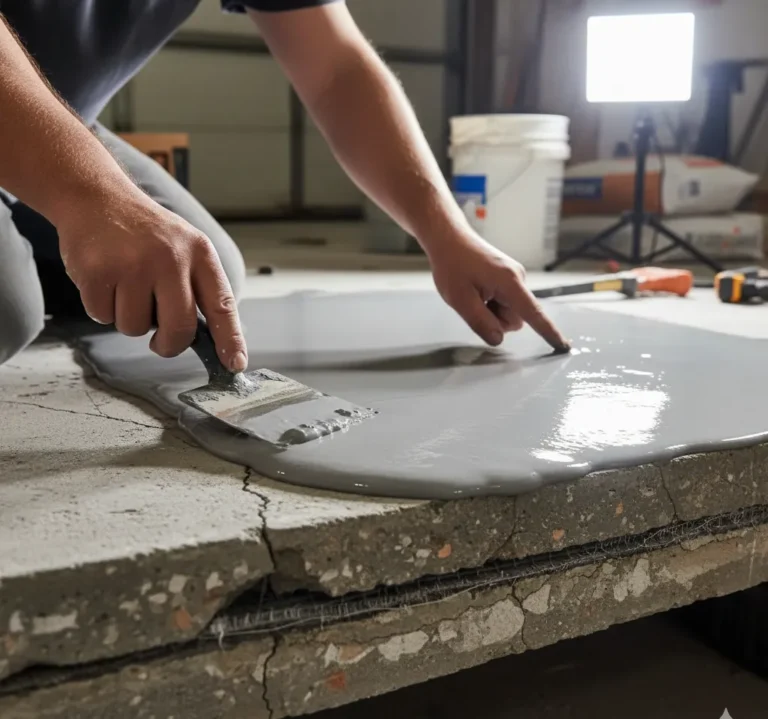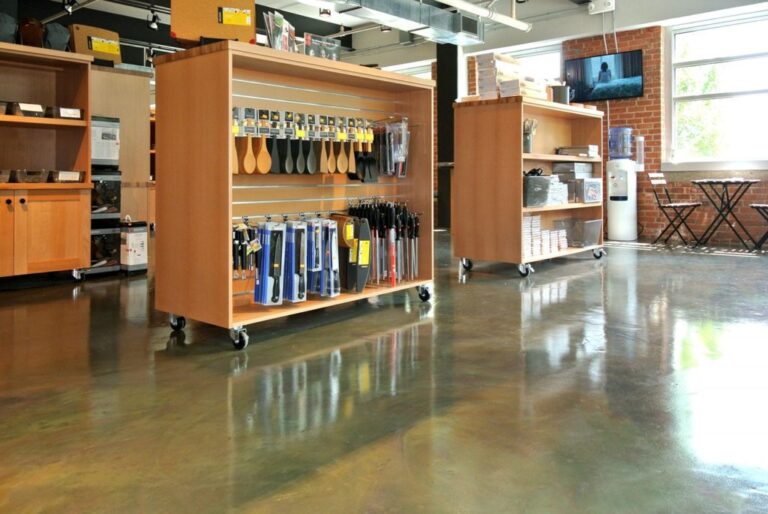What is Microcement?
Microcement is a cutting-edge, thin-layer cement-based coating that has revolutionized the world of interior and exterior design. This versatile material is composed of fine aggregates, high-quality cement, polymers, and special additives. It creates a seamless, durable, and aesthetically pleasing surface that can be applied to various substrates, including concrete, tiles, and wood.
Microcement offers a unique combination of strength and flexibility, making it an ideal choice for both residential and commercial applications. Its thin application (typically 2-3mm) allows for easy renovation without the need for extensive demolition or removal of existing surfaces.
Key characteristics of microcement:
- Seamless finish
- Highly customizable
- Excellent adhesion to various surfaces
- Water-resistant
- Durable and long-lasting
Benefits of Using Microcement
The popularity of microcement has soared in recent years, and for good reason. This innovative material offers numerous advantages over traditional flooring and wall covering options.
Versatility
Microcement can be applied to almost any surface, including floors, walls, ceilings, and even furniture. Its versatility makes it an excellent choice for creating cohesive designs throughout a space.
Durability
Despite its thin application, microcement is incredibly durable and resistant to wear and tear. It can withstand heavy foot traffic and is less prone to cracking than traditional cement.
Easy Maintenance
Microcement surfaces are easy to clean and maintain, requiring only regular sweeping and occasional mopping to keep them looking their best.
Customization Options
With a wide range of colors and finishes available, microcement allows for endless design possibilities. It can mimic the look of various materials, from polished concrete to natural stone.
Benefits of microcement:
- Seamless, modern appearance
- Suitable for indoor and outdoor use
- Resistant to stains and chemicals
- Quick installation process
- Cost-effective compared to some traditional materials
Best Microcement Brands
The microcement market has seen significant growth in recent years, with several brands emerging as leaders in the industry. These brands have established themselves through their commitment to quality, innovation, and customer satisfaction.
Ardex
Ardex is a global leader in high-performance specialty building materials, including microcement products. Their Pandomo line offers a range of microcement options for various applications.
Topciment
Topciment is a Spanish brand known for its high-quality microcement products and extensive color range. They offer solutions for both residential and commercial projects.
Ideal Work
Ideal Work, an Italian company, has gained recognition for its innovative microcement products, including their popular Microtopping system.
Leading microcement brands:
- Ardex (Pandomo)
- Topciment
- Ideal Work
- Duraamen
- Laticrete
Criteria for Choosing the Best Microcement Brands
When selecting a microcement brand for your project, it’s essential to consider several factors to ensure you choose a high-quality product that meets your specific needs.
Product Quality
Look for brands that use premium raw materials and have a proven track record of producing durable, long-lasting microcement products.
Range of Products
The best microcement brands offer a comprehensive range of products, including primers, base coats, finishing coats, and sealers, ensuring compatibility throughout the application process.
Technical Support
Choose brands that provide excellent technical support, including detailed application guides, training programs, and customer service.
Environmental Considerations
Many top microcement brands now offer eco-friendly options, using sustainable materials and low-VOC formulations.
Criteria for selecting microcement brands:
- Product performance and durability
- Color and finish options
- Ease of application
- Brand reputation and customer reviews
- Warranty and after-sales support
Identifying High-Quality Microcement Materials
High-quality microcement materials possess several distinctive characteristics that set them apart from inferior products. Understanding these features can help you make an informed decision when choosing microcement for your project.
Consistency
Premium microcement products have a smooth, uniform consistency that allows for easy application and a flawless finish.
Adhesion
High-quality microcement adheres exceptionally well to various substrates, ensuring long-lasting results and minimizing the risk of delamination.
Flexibility
The best microcement materials offer a balance of strength and flexibility, allowing them to withstand minor substrate movements without cracking.
Key features of quality microcement:
- Fine particle size for smooth finish
- High compressive and flexural strength
- Low shrinkage rate
- Excellent color stability
- Rapid curing time
How to Evaluate Microcement Quality
Assessing the quality of microcement materials requires careful consideration of various factors and, ideally, hands-on testing.
Technical Data Sheets
Review the technical data sheets provided by manufacturers to compare key performance metrics such as compressive strength, flexural strength, and adhesion values.
Sample Testing
Request samples from different brands and conduct small-scale tests to evaluate workability, finish quality, and color consistency.
Certifications
Look for products that have been tested and certified by recognized industry bodies, ensuring they meet established quality standards.
Steps to evaluate microcement quality:
- Research brand reputation and customer reviews
- Compare technical specifications
- Assess color and finish options
- Test samples on small areas
- Consult with experienced professionals
Applications of Microcement
Microcement Flooring
Microcement flooring has gained immense popularity due to its sleek, modern appearance and practical benefits. It’s an excellent choice for both residential and commercial spaces, offering a seamless, durable surface that’s easy to maintain.
Residential Applications
In homes, microcement flooring is often used in living rooms, kitchens, and bedrooms to create a contemporary, minimalist aesthetic.
Commercial Applications
Retail stores, offices, and restaurants frequently opt for microcement flooring due to its durability and ability to withstand heavy foot traffic.
Benefits of microcement flooring:
- Seamless, joint-free surface
- Slip-resistant options available
- Compatible with underfloor heating
- Wide range of color and finish options
- Easy to clean and maintain
Microcement Walls
Microcement wall applications offer a unique alternative to traditional wall finishes, providing a smooth, contemporary look that can transform any space.
Interior Walls
Microcement can be applied to interior walls to create a sleek, industrial-inspired look or to mimic the appearance of polished concrete.
Feature Walls
Many designers use microcement to create striking feature walls, often incorporating textures or patterns for added visual interest.
Advantages of microcement wall applications:
- Seamless, grout-free finish
- Excellent for creating feature walls
- Can be applied over existing tiles
- Moisture-resistant option for bathrooms
- Allows for creative texturing and patterning
Microcement Bathrooms
Bathrooms are one of the most popular areas for microcement applications, thanks to the material’s water-resistant properties and seamless finish.
Shower Enclosures
Microcement can be used to create stunning, grout-free shower enclosures that are both beautiful and practical.
Vanity Tops
Custom microcement vanity tops offer a sleek, modern alternative to traditional materials like marble or granite.
Benefits of microcement in bathrooms:
- Water-resistant when properly sealed
- Easy to clean and maintain
- Seamless finish eliminates grout lines
- Can be applied to walls, floors, and fixtures
- Allows for creative design possibilities
Microcement Kitchens
Kitchens benefit greatly from microcement applications, offering a durable, easy-to-clean surface that can withstand the demands of daily use.
Countertops
Microcement countertops provide a seamless, modern alternative to traditional materials, with the added benefit of being highly customizable.
Backsplashes
Microcement backsplashes offer a sleek, grout-free surface that’s easy to clean and maintain in busy kitchen environments.
Advantages of microcement in kitchens:
- Resistant to stains and heat when properly sealed
- Seamless finish for easy cleaning
- Can be applied over existing surfaces
- Allows for integrated sinks and draining boards
- Wide range of color options to suit any kitchen design
Outdoor Microcement
Microcement’s versatility extends to outdoor applications, offering a durable and attractive option for various exterior surfaces.
Patios and Terraces
Microcement can transform outdoor living spaces, providing a smooth, seamless surface that’s both stylish and practical.
Pool Surrounds
The slip-resistant properties of microcement make it an excellent choice for pool decks and surrounds.
Benefits of outdoor microcement applications:
- Weather-resistant when properly sealed
- Slip-resistant options available
- Low maintenance compared to traditional paving
- Can be applied over existing concrete or tiles
- Allows for seamless transitions between indoor and outdoor spaces
Microcement Construction Process
Surface Preparation
Proper surface preparation is crucial for the successful application of microcement. This step ensures optimal adhesion and a flawless finish.
Cleaning
Thoroughly clean the substrate to remove any dirt, dust, or debris that could interfere with the microcement’s adhesion.
Repairing Defects
Fill any cracks, holes, or imperfections in the substrate to create a smooth, even surface for the microcement application.
Key steps in surface preparation:
- Remove existing coatings or sealers
- Repair cracks and damages
- Sand or grind the surface if necessary
- Clean thoroughly and allow to dry completely
- Apply a suitable primer
Primer Application
Applying a high-quality primer is essential for ensuring proper adhesion of the microcement to the substrate.
Choosing the Right Primer
Select a primer that’s compatible with both the substrate and the microcement product you’re using.
Application Technique
Apply the primer evenly using a roller or brush, ensuring complete coverage of the surface.
Tips for primer application:
- Follow manufacturer’s instructions for dilution and drying times
- Apply in thin, even coats
- Allow primer to dry completely before proceeding
- Use a primer specifically designed for microcement applications
- Consider using a colored primer for better coverage
Microcement Mixing
Proper mixing of microcement is crucial for achieving the desired consistency and performance.
Measuring Components
Accurately measure the microcement powder and liquid components according to the manufacturer’s specifications.
Mixing Process
Use a low-speed drill with a mixing paddle to combine the components thoroughly, ensuring a smooth, lump-free mixture.
Key points for microcement mixing:
- Follow manufacturer’s instructions for mixing ratios
- Mix in small batches to prevent premature setting
- Avoid over-mixing, which can introduce air bubbles
- Adjust consistency as needed for different application layers
- Use clean tools and containers to prevent contamination
First Microcement Application
The first layer of microcement serves as the base coat, providing a foundation for subsequent layers.
Application Technique
Apply the first layer using a trowel or spatula, working in thin, even coats to achieve a smooth surface.
Drying Time
Allow the first layer to dry completely before proceeding to the next step, typically 24 hours depending on environmental conditions.
Tips for the first microcement application:
- Work in small sections to maintain a wet edge
- Apply pressure to ensure good adhesion to the substrate
- Smooth out any trowel marks or imperfections
- Avoid applying too thickly, which can lead to cracking
- Sand lightly between coats if necessary
Second Microcement Application
The second layer of microcement refines the surface and adds depth to the finish.
Refining the Surface
Apply the second layer using finer-grained microcement, focusing on achieving a smooth, even finish.
Creating Texture
If desired, incorporate texturing techniques during the second application to achieve specific aesthetic effects.
Key points for the second microcement application:
- Apply in thin, even coats
- Work quickly to blend areas and maintain consistency
- Use specialized tools for creating textures or patterns
- Allow sufficient drying time between coats
- Sand lightly if needed to achieve the desired smoothness
Sealing and Finishing
Proper sealing is essential for protecting the microcement surface and enhancing its durability.
Choosing a Sealer
Select a high-quality sealer that’s compatible with microcement and suitable for the intended use of the surface.
Application Process
Apply the sealer in thin, even coats, following the manufacturer’s instructions for drying times and number of coats.
Steps for sealing and finishing microcement:
- Ensure the surface is clean and completely dry
- Apply sealer using a roller or sprayer
- Allow each coat to dry completely before applying the next
- Buff the surface if desired for added sheen
- Allow the final coat to cure fully before use
Common Issues with Microcement
Can Microcement Crack or Seep Water?
While microcement is known for its durability, it can experience issues under certain conditions.
Cracking
Microcement can crack if applied incorrectly or if the substrate is unstable. Proper preparation and application techniques are crucial to prevent cracking.
Water Seepage
When properly sealed, microcement is highly water-resistant. However, inadequate sealing or damage to the surface can lead to water seepage.
Factors that can contribute to microcement issues:
- Poor substrate preparation
- Incorrect mixing or application techniques
- Inadequate sealing
- Excessive substrate movement
- Exposure to extreme temperature changes
How to Repair Microcement Cracks
Despite best efforts, cracks may occasionally occur in microcement surfaces. Fortunately, they can often be repaired effectively.
Small Cracks
For minor cracks, a simple repair using a color-matched microcement filler can often resolve the issue.
Large Cracks
More significant cracks may require removing the affected area and reapplying microcement, followed by proper sealing.
Steps for repairing microcement cracks:
- Clean the cracked area thoroughly
- Apply a suitable primer to the crack
- Fill the crack with color-matched microcement
- Sand the repaired area to blend with the surrounding surface
- Reseal the entire affected area
Maintenance and Cleaning of Microcement
Tips for Maintaining Microcement
Proper maintenance is key to preserving the beauty and durability of microcement surfaces.
Regular Cleaning
Sweep or vacuum regularly to remove dirt and debris that can scratch the surface.
Protective Measures
Use felt pads under furniture legs and avoid dragging heavy objects across microcement floors.
Maintenance tips for microcement:
- Clean spills promptly to prevent staining
- Avoid using harsh chemicals or abrasive cleaners
- Reapply sealer periodically as recommended by the manufacturer
- Address any damage or wear promptly to prevent further issues
- Use doormats at entrances to reduce dirt and grit
Best Practices for Cleaning Microcement
Proper cleaning techniques help maintain the appearance and integrity of microcement surfaces.
Daily Cleaning
For routine cleaning, use a pH-neutral cleaner and a soft mop or cloth to gently clean the surface.
Deep Cleaning
Periodically, perform a more thorough cleaning using specialized microcement cleaners to remove built-up dirt and grime.
Recommended cleaning practices:
- Use soft, non-abrasive cleaning tools
- Avoid excessive water, especially on floors
- Test new cleaning products in an inconspicuous area first
- Dry the surface thoroughly after cleaning
- Follow manufacturer’s recommendations for specific cleaning products
Microcement and Underfloor Heating
Compatibility of Microcement with Underfloor Heating
Microcement is an excellent choice for use with underfloor heating systems, offering several advantages over other flooring materials.
Heat Conductivity
Microcement’s thin application allows for efficient heat transfer from underfloor heating systems to the room.
Thermal Mass
The material’s thermal mass helps retain heat, contributing to energy efficiency in heated spaces.
Benefits of microcement with underfloor heating:
- Excellent heat conductivity
- Even heat distribution
- Quick heat-up times
- Compatible with various heating systems
- Seamless finish enhances heating efficiency
Installation Tips for Microcement on Heated Floors
Proper installation is crucial when applying microcement over underfloor heating systems to ensure optimal performance and longevity.
System Preparation
Ensure the heating system is properly installed and tested before applying microcement.
Expansion Joints
Incorporate expansion joints in the microcement to accommodate thermal movement.
Key considerations for microcement on heated floors:
- Allow sufficient curing time before activating heating
- Use flexible additives in the microcement mix
- Follow manufacturer’s guidelines for maximum temperature settings
- Consider using a reinforcement mesh for added stability
- Ensure proper sealing to protect against moisture from temperature changes
Choosing a Microcement Construction Team
Factors to Consider When Selecting a Construction Team
Selecting the right team for your microcement project is crucial for achieving high-quality results.
Experience
Look for contractors with specific experience in microcement applications and a portfolio of successful projects.
Certifications
Choose teams that have received proper training and certification from reputable microcement manufacturers.
Reputation and Reviews
Research the team’s reputation and read customer reviews. Positive feedback from previous clients can provide insights into their reliability and quality of work.
Importance of Professional Installation
Professional installation is crucial for the longevity and appearance of microcement surfaces. Here’s why:
Ensures Proper Application
Professionals understand the nuances of microcement application, including surface preparation and layering techniques, which ensures a smooth and durable finish.
Reduces the Risk of Errors
Improper application can lead to issues such as cracking or peeling. Professionals minimize these risks through their expertise and experience.
Guarantees Warranty
Many microcement manufacturers offer warranties that are only valid if the product is installed by certified professionals. This provides added protection for your investment.
Comparing Microcement Costs with Other Materials
When evaluating microcement, it’s useful to compare its costs with other popular flooring materials:
Tile
Microcement can be more expensive than standard ceramic tiles but often provides a more seamless and modern appearance.
Wood
While microcement may cost more upfront, it offers greater durability and lower maintenance compared to traditional wood flooring.
Vinyl
Vinyl flooring is generally less expensive than microcement but may not offer the same level of durability or aesthetic appeal.
Concrete
Microcement is often applied over concrete to enhance its appearance. The cost can be comparable, but microcement offers a more refined finish. Sleek microcement countertop is a smooth and modern surface for kitchens and bathrooms It gives a clean look and is easy to clean making it popular for home design Microcement flooring durability concerns Microcement floors can crack or chip if heavy objects are dropped on them and they may need regular sealing to prevent stains and water damage over time
Microcement resin comparison Flooring durability comparison Different types of floors can last longer or shorter depending on how they are made and used Some floors are tougher and can handle more wear and tear while others might need to be replaced sooner Microcement museum flooring is a smooth and durable surface that looks modern in art galleries and museums It helps protect the floor while making the space look sleek and clean for visitors to enjoy the exhibits
Boutique microcement displays show off smooth and stylish surfaces in stores These special displays help customers see how microcement can look in their homes Minimalist exhibition finishes use simple clean designs without extra decorations They focus on basic shapes and colors to create a calm and uncluttered look in art displays
Minimalist conference microcement creates smooth and sleek floors for modern meeting spaces It gives a clean and simple look that makes rooms feel bigger and more open Microcement counters modernize kitchens by giving a sleek and smooth look to the cooking area These thin and durable surfaces come in many colors to update old-fashioned kitchen designs
| Material | Cost Comparison |
| Tile | Higher cost but more seamless finish |
| Wood | Higher cost but more durable |
| Vinyl | Generally less expensive, less durable |
| Concrete | Comparable cost, more refined finish |
Microcement Colors
Popular Microcement Colors
Microcement is available in a variety of popular colors, including:
Neutral Tones
Colors like beige, gray, and white are popular for their versatility and ability to match various interior styles.
Earthy Hues
Earth tones such as brown and taupe provide a warm and natural look that complements rustic and natural designs.
Bold Colors
For a striking look, consider bold colors like deep blue or vibrant red, which can create focal points and add character to a space.
Custom Shades
Many suppliers offer custom color mixing to achieve specific shades or match existing décor.
| Color Type | Description |
| Neutral Tones | Versatile, matches various styles |
| Earthy Hues | Warm, natural look |
| Bold Colors | Striking, adds character |
| Custom Shades | Tailored to specific needs |
Custom Color Options
Customizing microcement colors can help achieve a unique look for your space:
Color Matching
Work with suppliers to match microcement colors to existing décor or create a unique shade that complements your design vision.
Special Effects
Incorporate special effects such as metallic or pearlescent finishes to add depth and visual interest.
Sample Testing
Request samples to test colors in your space before making a final decision. Lighting and surrounding elements can affect how colors appear.
| Custom Option | Details |
| Color Matching | Match to existing décor or create new shades |
| Special Effects | Metallic or pearlescent finishes |
| Sample Testing | Test colors in your space before final choice |
FAQs
What are the best microcement brands available?
Some of the top microcement brands include Topciment, Microtopping, and Basalt. These brands are renowned for their high-quality products and reliable performance. Each brand offers a range of options and finishes that cater to different design preferences and project requirements.
How do I choose the best microcement brand for my project?
To select the best microcement brand, consider factors such as product quality, brand reputation, and customer reviews. Evaluate the available finishes, colors, and customization options to ensure they align with your project needs. Additionally, consult with professionals or request samples to assess the suitability of the product for your specific application.
Can microcement be used in wet areas like bathrooms and kitchens?
Yes, microcement can be used in wet areas such as bathrooms and kitchens. It is highly resistant to water and moisture when properly sealed. For best results, ensure that the microcement is applied by a professional and that appropriate waterproofing measures are taken to prevent any potential issues.
What should I look for in a high-quality microcement product?
A high-quality microcement product should have excellent adhesion properties, durability, and a consistent finish. Look for products that offer good resistance to wear and tear, stains, and moisture. Additionally, choose a product from a reputable brand with positive customer feedback and warranty options.
How do I maintain and clean microcement surfaces?
To maintain and clean microcement surfaces, use mild, non-abrasive cleaning agents and a soft cloth or mop. Avoid harsh chemicals or scrubbing tools that could damage the surface. Regular cleaning and prompt attention to spills will help preserve the appearance and longevity of the microcement.
Is microcement suitable for outdoor applications?
Microcement can be used for outdoor applications, provided it is properly sealed and maintained. It is resistant to weather conditions, but ensure that the installation includes appropriate waterproofing and protection measures to withstand outdoor elements effectively.
What are the common issues with microcement and how can they be resolved?
Common issues with microcement include cracking, peeling, and discoloration. These issues can often be resolved by ensuring proper surface preparation, using high-quality products, and following installation guidelines. Regular maintenance and prompt repairs will help prevent and address these issues.
Can microcement be applied over existing tiles?
Yes, microcement can be applied over existing tiles. However, the surface must be clean, stable, and well-adhered. It is essential to prepare the surface properly, including any necessary priming or leveling, to ensure good adhesion and a smooth finish.
How does microcement compare to other flooring materials in terms of cost?
Microcement typically has a higher upfront cost compared to materials like vinyl or standard tiles. However, it offers a unique aesthetic, durability, and ease of maintenance that can justify the investment. Compared to high-end materials like wood or stone, microcement can be a cost-effective option with a similar visual appeal.
What are the customization options available for microcement finishes?
Microcement finishes can be highly customized, including color variations, textures, and special effects. You can choose from a range of standard colors or opt for custom mixing to match specific design requirements. Textures and finishes can also be tailored to create unique patterns and effects that suit your style and preferences.





